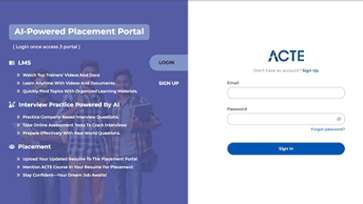Software Testing is the process of evaluating a system or its component(s) to determine whether or not it meets the specified requirements. In layman's terms, testing is the process of running a system to identify any gaps, errors, or missing requirements that are inconsistent with the actual requirements. A test should be run to see if a webpage can be opened in Internet Explorer. Manual testing is a simple way to accomplish this. However, manually testing to see if the web-server can handle the load of 1 million users is nearly impossible.
Additional Info
The Scope Of Software Testing:
Technically, software testing is an investigation that is carried out to provide stakeholders with information about the quality of a specific product or service under test. In other words, software testing is a verification and validation process. Test techniques include, but are not limited to, the process of running a program or application in order to find software bugs (errors or other defects). A tester is expected to know the software to be tested as well as the tools needed to test it. It is frequently highly specialized, and your employer may be required to train you. To be an effective tester, you must be well-organized, logical, meticulous, thorough, and patient. A career in software testing Over the last few years, the profile of the software tester has grown dramatically. Testing has become critical for many application/product implementations, and businesses have begun to recognize the value of structured testing of applications prior to release.
Many people consider testing to be a good professional career in recent years. A test engineer can advance to become a senior test engineer, a test lead to a test manager, or a QA lead or QA Manager. Furthermore, the testing tools side offers a plethora of options. Aside from test management tools, there is a variety of functional, performance, and security testing tools available, such as HP's Quality Center, IBM's CQTM, and others. The potential for growth in the Software Testing domain is enormous. Professionally trained software testers are in high demand and highly sought after in the industry today. One can work for an independent software testing company or for a leading firm's internal software testing department. Because of a skills shortage in test automation areas, there is a high demand for niche skills such as SOA testers, security testers, and so on. However, one must keep in mind that specialization is required in a testing career – in order to advance in the testing career path, one must specialize. The following are some of the most important areas of specialization :
- Domain Knowledge
- Automation Testing Tools Knowledge
- Professional Certifications
- Niche Areas In Testing
Top 7 industry trends in Software Testing:
Modern customers expect a frictionless software experience on their terms and through their preferred channels in this fast-changing world. To meet these rising expectations, businesses must constantly adapt, improve, and deliver competitive customer-centric solutions. Many global businesses have recognized the importance of software testing and quality assurance (QA) and have begun to incorporate it into the early stages of the software development life cycle. Early adoption is the simplest and most cost-effective way to ensure faster software release cycles, shorter time-to-market, and high-quality software products. With the rise of next-generation technologies such as artificial intelligence, cloud computing, robotic process automation, mobility, IoT, and DevOps, businesses are also facing challenges in software development and testing. To assist you in dealing with the current pressures and realities of software development, we have outlined recent software testing trends that may assist businesses in accelerating release cycles while maintaining high-quality software products and without sacrificing cost optimization.
The rise of artificial intelligence and machine learning in testing:- Software teams can optimize their testing strategies and shorten their release cycles by leveraging AI. We can expect AI to be used in more testing areas related to analytics and reporting in the future. Using AI algorithms to identify test cases that require both manual and automated testing. Optimizing test suites by determining and removing unnecessary test cases. Ensuring optimal test coverage to identify essential keywords from a Requirements Traceability Matrix. Aside from that, AI is being used to develop automation testing tools. These will assist QA teams in designing tests from the ground up, resolving issues, and reducing the need for human intervention in testing generation and maintenance. Machine learning is also used in automation. Complex neural networks and algorithms can help predict the outcome of specific tasks. Because applications require continuous testing and validation, we can expect analytics-centric ideas based on machine learning to gain traction in solving potential problems.
The significance of QAOps development:- The digital world now necessitates the rapid release of applications without sacrificing quality. QAOps is an abbreviation for Quality Assurance and DevOps. Previously, the role of QA was limited to application software testing, but it is now essential in all phases of software development. DevOps is the collaboration of operations and development engineers to support the entire software life cycle. It entails a set of software development practices centered on bug fixes, feature development, and dealing with frequent updates. QAOps is becoming more popular in software testing trends because. It enables process automation and improves workflows between IT operations, software development, and QA. It enables the software to be tested using the continuous integration (CI)/continuous delivery (CD) pipeline rather than the QA team operating independently.
Internet of things (IoT) testing to boost digitally connected smart devices:-
In the field of technology, the Internet of Things (IoT) is emerging as a dynamic and rapidly growing concept. It is the combination of massive networks: devices, people, processes, and technologies that collect and share data over the internet. According to Gartner's research, there will be 25 billion internet-connected devices, up from 14.2 billion in 2019. These figures clearly demonstrate the growing interest in the IoT field, particularly in the healthcare sector. Because software is included in IoT devices, and as more devices connect and generate large amounts of data, an effective IoT testing strategy must be implemented. In the coming years, it will be required to protect software from vulnerabilities and threats while also ensuring data security. With the frequent release of new devices on the market, an infinite number of testing combinations will be required to test devices, communication protocols, operating systems, and platforms. There will be a high demand for software testers to perform testing and ensure security, data integrity, performance, compatibility, ease of use, authenticity, and monitoring of any delays, among other things. The QA teams will be expected to broaden their knowledge and improve their ability to conduct IoT testing. The end result will be smart devices that are well-connected, secure, and efficient for end-users.
The increasing demand for big data testing:- Enterprises frequently deal with a wide range of data types and massive data volumes. Big data is becoming increasingly important in many business sectors, including healthcare, telecommunications, retail, banking, technology, and media. End-to-end testing is required for structured and unstructured data mining. Big data testing assists organizations in improving their market strategies and targeting by allowing them to make informed decisions based on precise data validations.Big data testing ensures data quality, accuracy, and integrity, which is critical for any organization to make informed decisions. Because enterprise data is becoming more complex by the year and business strategies are being built with it, big data testing will play a significant role.
The incorporation of QA test automation:- As more businesses adopt the latest agile and DevOps processes to meet the demand for quality at speed, test automation services have become an essential testing component. In 2019-2020, 44 percent of IT organizations automated 50 percent of their testing, and the global automation testing market is expected to reach USD 68 billion by 2025. Automated testing enables teams to perform recurring tasks more precisely and quickly, identify bugs more precisely and quickly, provide continuous feedback, and execute test coverage. As a result, organizations that incorporate automated testing into their quality assurance processes save a significant amount of time, money, and human resources.
A shift towards performance engineering from performance testing:- The growing demand for fast-loading, high-performance applications has highlighted the importance of performance testing and engineering. Because performance testing only identifies performance bottlenecks after development is complete, the trend is shifting toward performance engineering, in which QA teams design the application from the start of the software development life cycle. The primary goal is to identify and resolve performance issues early in the development cycle. This can save a significant amount of time later on by reducing the need for troubleshooting and rewrites. Performance testing involves the collaboration of software, hardware, performance, configuration, security, usability, and business values. It is critical for meeting rapidly changing needs, shorter development cycles, and frequent application releases.
Cyber security testing and risk compliance:- Various security threats emerged as a result of the digital revolution. Application, network, and system security testing not only ensures secure transactions but also protects end-user privacy. Chief Technology Officers and Chief Information Officers are constantly emphasizing the importance of security testing, which will undoubtedly increase in 2021, preventing economic losses and ensuring brand loyalty. Software testing and quality assurance are similar to any other development process that is progressing to a higher level.Whatever the digital transformation looks like in 2021, it is certain that testing engineers will see a lot of changes. In the coming years, artificial intelligence and manual testing will receive a lot of attention, and manual testing will be gradually replaced by test automation services. To stay ahead of the curve in the ever-changing technology landscape, enterprises must keep up with the latest software testing and QA service trends.
Advantages of Software Testing:
You save money from QA:- You and your customers are expensive. And the longer you uncover a bug, the harder and more costly it's to fix it, is well known. You will save time and money after deployment by using QA testing throughout the software's development process.
QA Casual Corporate Emergencies Prevention:- The stakes are even higher with corporate software. Bugs can lead to system blackouts, missing data, and communication breakdowns incorporate software. You have better assure yourself that the software will work exactly as you want if you use the software throughout the company or handle sensitive information. No error margin is available.
QA Inspires Customer Trust:- With the clear priority of QA software testing, you send a message to your customers that their software is as successful as possible. This is extremely important when it comes to quality development and the development of long-term relationships.
The Great User Experience 4 QA maintains:- These days the user experience makes or breaks a product increasingly clear. If the software is slow or slow, the user experience with the product will be impeded. Bad user experience leads to unhappiness and frustration. A good experience for users, which results in the satisfaction of one person who is more likely to recommend the product and your business to others, when you have carefully tested a software product.
In addition, QA brings benefits:- Investing in QA means that you can sell your product at a more advanced rate when you create software that you market or sell. Nothing is worse than an angry user who paid for a product that doesn't even work.
QA Client Satisfaction Boosts:- Concerning the first point, this sixth advantage focuses on the reputation that your company brings customer satisfaction, not only profit. You will enhance your reputation by providing quality software that works when and how you wish it to work. Do not impose defective software on your client's patience, which you must fix all the time. Give them quality from the start and they will loyalty reward you.
Features of Software Testing:
To be a great Software Tester, you need to develop the following 16 features within you:
Be Skeptical:- Don't believe that the build provided by the developers is bug-free or of high quality. Everything should be questioned. Accept the build only if you test it and find no flaws. Don't believe anyone, regardless of their title; instead, apply your knowledge and try to find the flaws. This must be followed until the end of the testing cycle.
Don’t Compromise On Quality:- After certain stages of testing, do not make any compromises. There is no limit to how much testing you can do until you have a quality product. Quality is a term coined by software testers to describe more efficient testing. Compromise at any level results in a defective product, so avoid it at all costs.
Ensure End-User Satisfaction:- Always consider what will make an end-user happy. How easily can they use the product? Don't stop at just testing the standard requirements. Only when you provide an error-free product can the end-user be satisfied.
Think from the Users Perspective:- Every product is designed with the customer in mind. Customers can be either technical or non-technical. Many important bugs will be missed if you do not consider the scenarios from their point of view. Put yourself in their shoes for a moment. First and foremost, get to know your end-users. Their age, education, and even location can all play a role in how they use the product. Assemble your test scenarios and test the data accordingly. After all, the project is said to be successful only if the end-user can successfully use the application.
Prioritize Tests:- Identify the critical tests first, and then prioritise the execution based on test importance. Never run test cases sequentially without first determining their priority. This ensures that all of your critical test cases are executed early and that you do not cut back on them at the end of the release cycle due to time constraints.
Be Open to Suggestions:- Even if you are the project's authority and have in-depth project knowledge, listen to everyone. There is always room for improvement, and soliciting feedback from other software testers is a good idea. Everyone's feedback on how to improve the project's quality will undoubtedly assist you in releasing bug-free software.
Start Early:- Don't put off testing until you have your first build. In the early design phase, begin analyzing requirements and preparing test cases, test plans, and test strategy documents. Starting testing early allows you to visualize the entire project scope and plan accordingly.
Identify and Manage Risks:- Every project carries some level of risk. Risk management consists of three steps. Identifying, analyzing, and mitigating risks Incorporate a risk-based testing procedure. Software testing priorities are determined by risk assessment.
Do Market Research:- Don't believe that your only responsibility is to validate software against a set of requirements. Be proactive, conduct market research on your product, and make suggestions to improve it. This research will also assist you in comprehending your product and its market.
Develop Good Analyzing Skill:- This is essential for requirement analysis, but it may also be useful for understanding customer feedback while developing the Test strategy. Inquire about everything around you. This will start the analysis process, which will assist you in resolving many complex problems.
Focus on Negative Side as Well:- Testers should have a break-the-rules attitude. Concentrating solely on the positive will almost certainly result in a slew of security issues in your application. To keep other hackers away from your project, you should be the hacker. Negative testing is also essential. Cover a large portion of your test cases based on the worst-case scenarios.
Salary Package of Software Testing:
In the United States, the national average salary for a Software Tester is 66,010. To see Software Tester salaries in your area, sort by location. The pay scale for a beginner or fresher, whether he is a Tester or Developer, is the same. When you switch companies as an experienced resource, your salary is determined by your previous pay, the current state of IT, the role you are taking on, and your skills. In India, the average software test engineer salary is 1,050,000 per year, or 538 per hour. Starting salaries for entry-level positions start at 600,000 per year, with most experienced workers earning up to 2,093,333 per year. Graduate-level software testing positions start at around 18,000 to 24,000 per year (depending on location and company size). Salaries can skyrocket after three to five years of experience. On average, software testers earn between 35,000 and 50,000. Salaries vary depending on location, technical knowledge, and industry. Currently, the City of London and financial services pay the highest wages. Some companies also provide bonus programmes, benefits, and overtime pay for working unsociable hours.







































